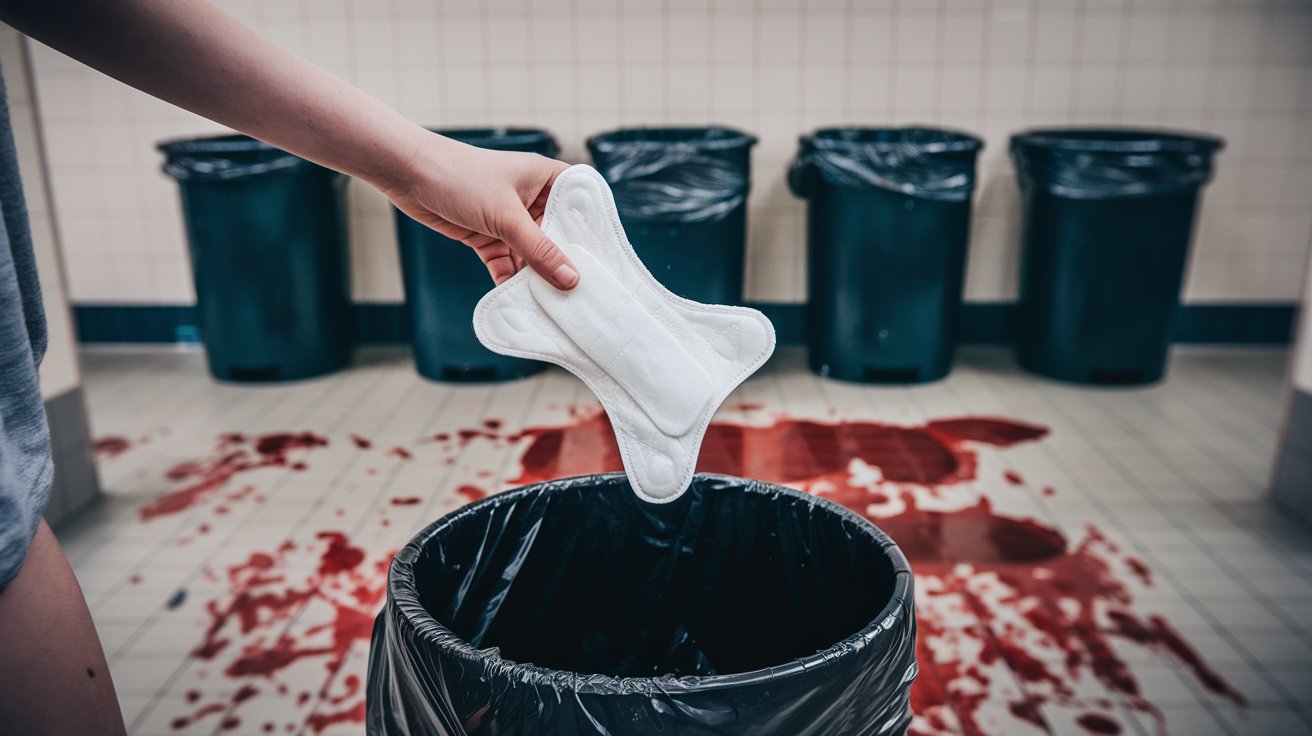
Sanitary pads are an essential period hygiene product used by millions of women and girls worldwide. Proper disposal of soiled pads is vital for preserving hygiene, guaranteeing environmental sustainability, and reducing health problems. Many individuals don’t know how to properly dispose of waste, which can cause issues including pollution, clogged sewage systems, and health hazards. This article will discuss different disposal techniques, eco-friendly substitutes, and the need of raising awareness about hygienic waste management.
The Significance of Appropriate Sanitary Pad Disposal
The majority of synthetic materials used to make sanitary pads include plastic, which takes hundreds of years to break down. When they are disposed of improperly—for example, by flushing them down the toilet or discarding them in the open—they might cause:
Environmental Pollution: Pads made of plastic damage ecosystems and marine life by adding to water and land pollution.
Health Risks: Hazardous germs and viruses can proliferate in decomposing sanitary waste.
Blocked Drainage Systems: Sewer systems may become seriously clogged when pads are flushed down toilets.
Social Stigma: Menstruation is still a taboo topic in many cultures, and inappropriate disposal techniques can increase humiliation and secrecy.
Where Should Girls Dispose pads?

Dispose of Their Pads?Depending on the facilities available and environmental factors, there are a number of appropriate ways to get rid of sanitary pads. The best practices are listed below:
1 Employ the Appropriate Sanitary Bins
Sanitary disposal containers for old pads are available in many public toilets, businesses, and educational institutions. These containers are made to hygienically contain menstrual waste until it is picked up and disposed of appropriately.
2. Place in a trash can after wrapping in paper.
The best course of action is to wrap the old pad in toilet paper or a biodegradable paper bag before throwing it in the garbage if there isn’t a dedicated sanitary bin accessible. This guarantees that the trash is treated correctly, keeps things hygienic, and helps avoid stink.
3. Refrain from flushing the toilet.
The practice of flushing sanitary pads down the toilet is among the most frequent errors. Pads do not dissolve in water like toilet paper and can cause severe plumbing issues. This leads to costly repairs and environmental pollution.
4. For menstruation waste, use a biodegradable disposal bag. These bags are eco-friendly and aid with odor control. They decompose more quickly than plastic when dumped in the garbage.
5. Burning
In certain places, burning sanitary pads is a practical way to get rid of them. To cut down on landfill garbage, several workplaces, schools, and rural towns burn sanitary waste in small-scale incinerators. To reduce air pollution, this approach should be used carefully.
6. Composting (for Organic Pads)
With the emergence of eco-friendly menstruation products, certain biodegradable sanitary pads may be composted. When deposited in compost bins, pads composed of bamboo or organic cotton naturally break down. They should, however, be composted in a separate system intended for hygiene items rather than being combined with food waste.
Sustainable Substitutes for Throwaway Pads

Many women and girls are converting to sustainable menstruation products in an effort to reduce waste and environmental harm. Here are a few substitutes:
1. Cups for menstruation
Reusable, medical-grade silicone items known as menstruation cups collect menstrual fluid instead of absorbing it. With the right maintenance, they are affordable, environmentally beneficial, and have a ten-year lifespan.
2. Pads made of cloth
Because reusable cloth pads may be cleaned and reused again, waste is greatly decreased. Unlike some disposable pads, they are composed of natural fibers and don’t contain any dangerous chemicals.
3. The period panties
The purpose of period underwear is to absorb menstrual blood without the use of tampons or pads. These are a sustainable option because they are reusable and washable.
4. Pads that biodegrade
Some businesses use bamboo, organic cotton, or other natural materials to make biodegradable sanitary pads. These pads cause less damage to the environment since they break down considerably more quickly than conventional ones.
Raising Awareness of Appropriate Sanitary Waste Management
In order to ensure appropriate disposal of menstrual waste, education and awareness are essential. Governments, non-governmental organizations, and educational establishments ought to collaborate to:
Put Waste Disposal Policies into Practice: It should be commonplace to have sanitary containers in public toilets and schools.
Encourage Schools to Teach Girls: Menstrual hygiene education should be a part of the curriculum in schools, where young girls will learn about sustainable alternatives and appropriate disposal techniques.
Community Awareness Campaigns: These initiatives can teach men and women about appropriate sanitary waste management and help eliminate the stigma associated with menstruation.
Encourage Businesses to Innovate: To cut down on plastic waste, the menstruation product business should make investments in eco-friendly, biodegradable, and sustainable alternatives.
Conclusion
Sanitary pad disposal must be done correctly for the sake of public health, hygiene, and the environment. Women and girls should be taught proper disposal techniques and, if feasible, encouraged to choose sustainable substitutes. We can make everyone’s future cleaner, healthier, and more sustainable by raising awareness and putting in place appropriate waste management systems. The stigma associated with menstruation needs to end, and better methods of disposing of menstrual waste need to be implemented.

